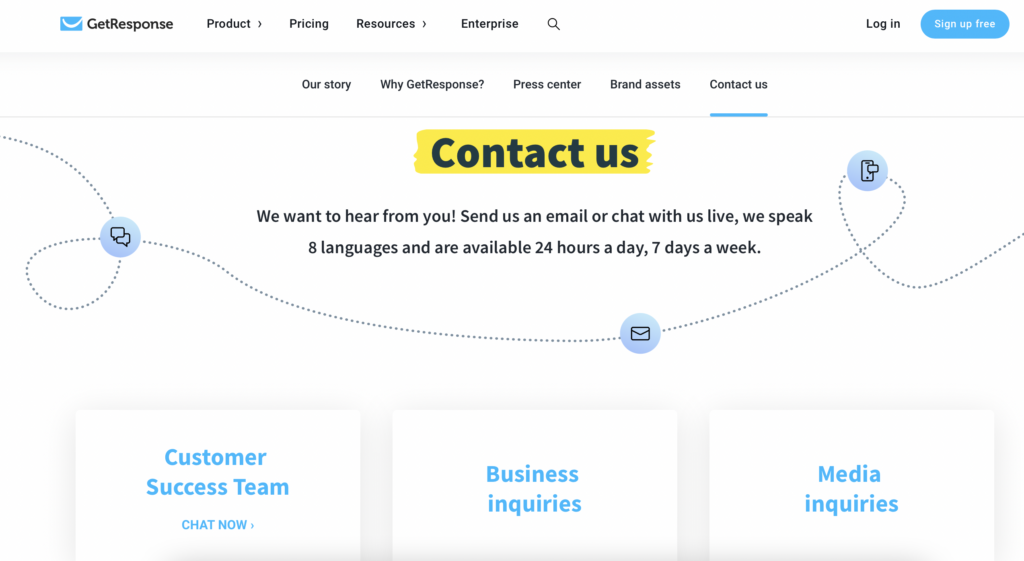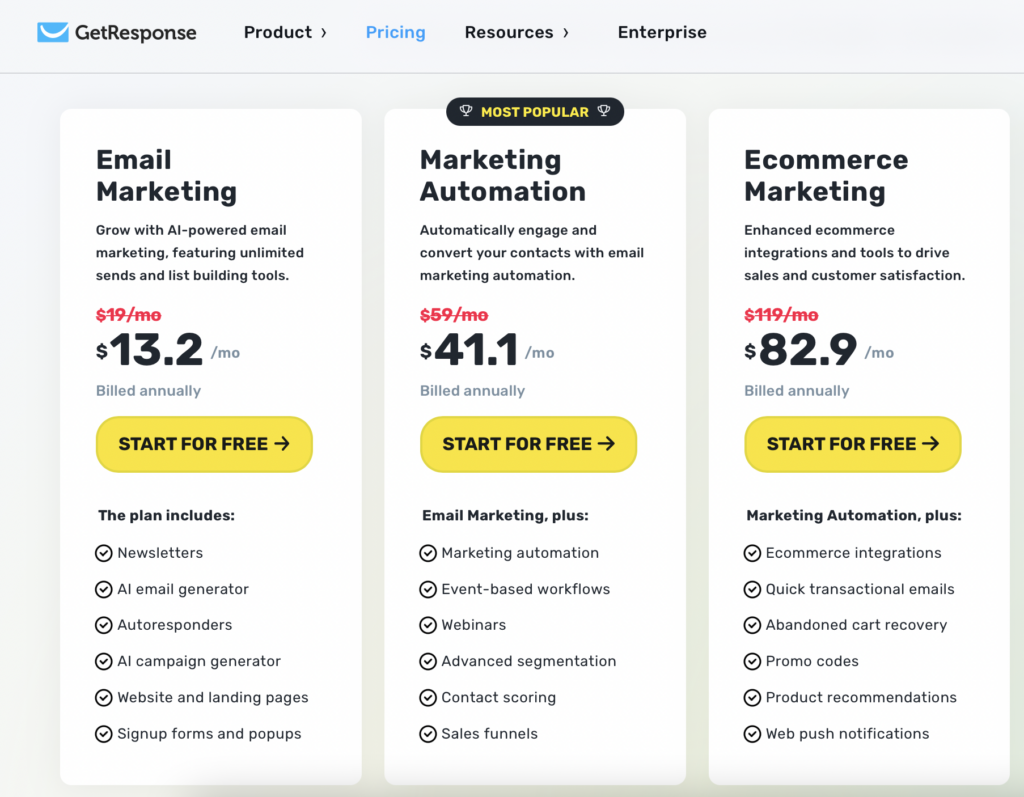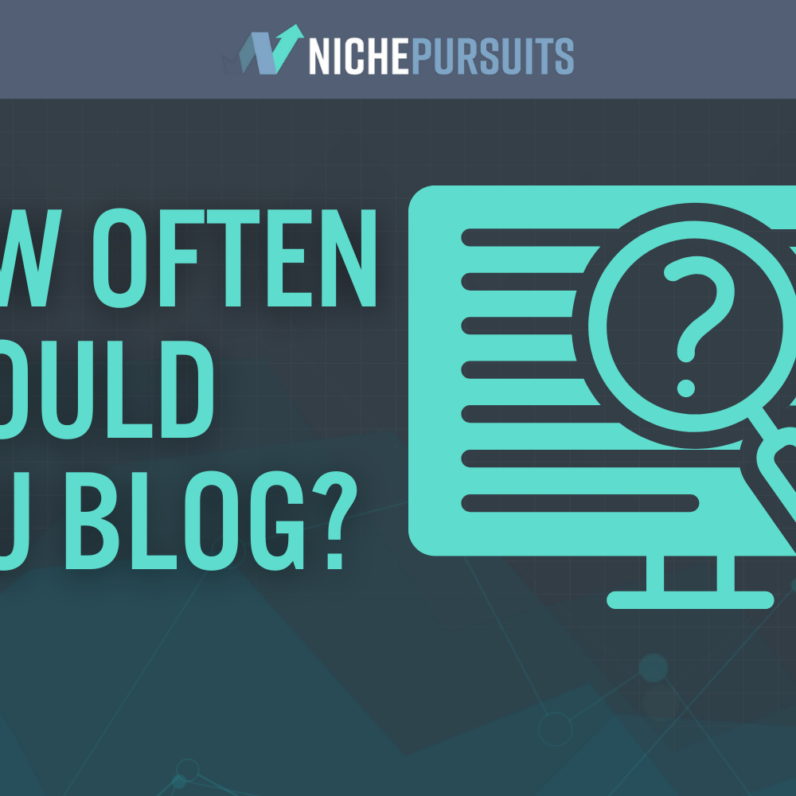Getresponse vs Mailchimp: Which Is Best For Your Email Marketing Needs?

When you buy something through one of the links on our site, we may earn an affiliate commission.
Email marketing solutions are complex, with dozens of tools on the internet vying for your attention (and your money!). Mailchimp and Getresponse are two of the most popular email marketing platforms, but they have some key differences that might indicate one over the other. We're going to take a head-to-head look at Getresponse vs Mailchimp to determine which one is right for you.
If you're unsure about which option is the best email marketing platform, we're here to help.
Let's dive in!
Contents
TL;DR: Getresponse vs Mailchimp: Who Wins?

In a hurry to know which platform for email marketing is going to be the best for you?
If you have the budget, Getresponse is far more powerful than Mailchimp. It gives you plenty of room to grow, and paid plans permit you to send unlimited emails to your audience.
They have many of the same features as Mailchimp when it comes to pre-designed templates and easy signup forms. But the funnels and webinar functions set them apart.
Mailchimp is great for anyone with a limited email list who wants to stick with low-cost solutions. It's a touch easier to use, has better deliverability, and features more integrations than Getresponse.
Not to mention, it has slightly more advanced analytics with access to social posts and engagement.
Both are great platforms, but Getresponse tends to have better email marketing features if you don't mind the extra steps when it comes to usability.
See our full Getresponse review here.
Getresponse vs Mailchimp: Key Unique Features of Each
Where do Getresponse and Mailchimp truly shine? Let's dive into the unique features of each to help you decide which email marketing platform is going to be the right fit for you.
Getresponse: Multiple Languages

If you're looking for a tool that can be translated into multiple languages, Getresponse should be your first choice. It's available in 17 languages, whereas Mailchimp only features more limited options beyond English, including Spanish, Portuguese, French, German, and Italian.
Mailchimp: Postcards

Want to add a personal touch beyond your landing pages? Give your audience something to hold on to with a tangible postcard.
Mailchimp will look for your list's physical addresses and send them either one-time postcards or recurring postcards to keep you top of mind.
Costs vary depending on postage to your country of choice and the number of postcards you wish to send.
Getresponse: Webinars

Maybe you are looking for more than just marketing automation or a drag-and-drop builder. To this end, you might appreciate Getresponse's webinar function to engage your audience.
While not a part of their free plan, you can host webinars for up to 1,000 live attendees and store up to 20 hours of recordings in their cloud.
Allow your audience to register, and you can send them to landing pages built specifically for your event. This allows you to collect leads far more easily and make sure your audience is actually engaged.
Getresponse: Automated Conversion Funnels

We would be remiss if we didn't touch on the fact that Getresponse features conversion funnels on your landing pages with options for easy opt-ins, lead magnet delivery, sales funnels, and more.
Sell more of your product or build your list -- whatever your goal is, Getresponse can help.
They feature 30 optimized options to help you make the most of gathering prospective leads, starting with items like Facebook ads and moving all the way to making sales.
Getresponse vs Mailchimp Email Marketing Features Compared
With some of the unique features out of the way, let's take a look at the head-to-head comparison between Getresponse vs Mailchimp.
User Interface and Ease of Use

When it comes to email marketing features, you want something that is going to be easy to implement with your sales funnels, Google Analytics, and more.
Whether you want to build landing pages or use a drag-and-drop editor, ease of use should be paramount in your decision-making process.
Mailchimp tends to come out slightly ahead of Getresponse in this category, but it's fairly close. Both are easy to navigate and are geared toward beginners who may not yet need some of the advanced features offered by other platforms.
However, Mailchimp features a drag-and-drop builder that is far more customizable than the features Getresponse offers.
With Mailchimp, you can customize almost any aspect of your newsletter, whereas Getresponse only allows changes to be made to the header and footer.
Winner: Mailchimp
Marketing Automation

Both Mailchimp and Getresponse offer marketing automation that allows you to build sequences when your subscribers take certain actions.
This is perfect if you want to send emails for abandoned carts or based on which newsletters someone has already opened.
Under the marketing automation builder umbrella, you can use these tools to send emails when a subscriber:
- Clicks a link in your newsletter
- Purchases on your website
- Visits a specific page on your website
- Based on time preferences (a day after subscribing, for example).
But who does it better?
In this area, Getresponse allows you to make far more complicated automated sequences. Both are easy to use and understand, even for beginners.
However, Getresponse takes things a step further, allowing you to generate loops as part of their advanced automation. In other words, if someone drops off your prescribed sequence, you can put them back at the beginning.
Winner: Getresponse
Template Selection for Newsletter Design

Most people looking for an email marketing service don't want to create their newsletters from scratch (though both platforms allow for this, too). Instead, they want modern email templates that are easy to customize according to your branding.
You'll find plenty of options between Mailchimp and Getresponse, but Getresponse does it better.
Most people find that Mailchimp is limited when it comes to their email templates -- especially on their low-tier plans (free account and Essentials).
More are unlocked when you pay for access to higher tiers. If you want access to a specific template on Mailchimp, you may even have to pay for it.
That being said, many people still find that these templates look a bit less modern and sleek compared to Getresponse.
Winner: Getresponse
List Limits

When it comes to email marketing services, you don't want to limit yourself when it comes to how many people can opt into your newsletter. What are the list limits with both GetResponse and Mailchimp?
For convenience's sake, we'll look at the free plans on each email marketing platform to give you an idea of where you might be able to maximize your spend on a bootstrapped business.
That being said, you may find that a paid plan offers greater value to you.
Mailchimp's free plan allows you to have up to 500 subscribers and send 1,000 emails each month (no more than 500 emails on any given day).
On the other hand, Getresponse allows you to have the same number of subscribers but permits you to send up to 2,500 emails per day.
Winner: Getresponse
Deliverability

Online marketing won't be able to make a difference if your emails don't wind up in someone's inbox. Not every email marketing tool is going to put your campaigns where they belong and where they will ultimately be seen by your audience.
Which email marketing services win this round?
Mailchimp actually does substantially better than Getresponse when it comes to deliverability. It might seem like a small fraction different, but that can mean the difference between a few emails and a few sales, clicks, or leads.
According to Email Tool Tester, Mailchimp has a 91.2 percent deliverability rate compared to Getresponse's 88.4 percent.
Winner: Mailchimp
Integrations

Your email marketing campaigns might be better served by integrating with other tools. GetResponse and Mailchimp both offer the ability to use more than 200 tools, including BigCommerce, PayPal, and even Shopify. However, Mailchimp tends to shine when it comes to these email marketing features.
Getresponse requires you to use third-party integration for many services (namely Zapier). This requires an extra step and a level of complexity that makes it a little harder to use.
Not to mention, you may have to pay an additional fee to implement some of these third-party tools with Getresponse's email marketing software.
If you want a more advanced feature, such as using newsletter signup pop-ups on Squarespace, then you might want to consider using Mailchimp instead.
Winner: Mailchimp
Analytics

Who allows you to see the most data on your email newsletters: Mailchimp vs Getresponse? This is one area where you may not find much difference with the advanced features of both.
You can keep tabs on your email newsletter list with data for who opened them, who made a sale, and where in the world your subscribers are located.
It's also important to note that both platforms give you access to their own data on Google Analytics. This allows you to get even more details on how your online stores or landing pages are resonating with your audience.
It's easy enough to set up, even for beginners, and has everything you need to monitor your brand.
That being said, Mailchimp does come just a little bit ahead with its social media reporting. You can track how many people are engaged with your social media posts, which could be great news for your brand.
Winner: Mailchimp
Customer Support Team

Eventually, you may need help with either email marketing platform. The question is: how can you reach their customer support team when the need arises?
Unfortunately, there isn't a clear winner in this category. Both Mailchimp and Getresponse have email and live chat options.
If you opt into their most expensive plans, you gain access to phone support as well, but this level is seriously expensive.
You could easily find another email marketing platform that includes phone support on a lower tier if this was something that truly made a difference in your marketing.
Winner: Tie
Pricing: Getresponse vs Mailchimp
Many people want to get started with a free plan for their marketing automation to test the waters. While you won't gain access to all of the powerful features found here with a free account, you gain access to quite a few options.
Mailchimp's free plan allows you to have up to 500 contacts, and the Getresponse free plan permits the same.

However, they differ when it comes to more advanced automation, as well as larger list sizes. Mailchimp starts at $13 per month for more advanced features but still only permits 500 people on your list. For larger list sizes, you will need to pay more incrementally. Keep in mind that you're less likely to end up in a spam folder with Mailchimp.

Getresponse starts at $13.20 per month (annually, for paid plans). But you can send unlimited emails, design unlimited landing pages, and gain far more features than the free plan.
You even get A/B testing at this lowest price tier. You can also segment your list in this lowest tier.
Final Thoughts: Choosing Getresponse vs Mailchimp
With all of this in mind, which email marketing platform is the right fit for you? Whether you run an eCommerce business or just want lead-generation tools, both are powerful options.
Getresponse offers more bang for your buck with advanced features like webinars and conversion funnels.
While it may be more expensive (only by a little bit), it's worth the extra investment for anyone serious about their sign-up forms, Google ads, and sending out newsletters regularly.
A Mailchimp account is still a good option if you want a basic landing page builder with drag-and-drop capabilities. It's easy to use and has great customer support for both free and paid plans, so you may consider this as a low-cost option if your mailing list isn't too large.
Both are powerful tools, and you can't go wrong with either one!
For related reading, check out these articles:
Want to learn step-by-step how I built my Niche Site Empire up to a full-time income?
Yes! I Love to Learn
Learn How I Built My Niche Site Empire to a Full-time Income
- How to Pick the Right Keywords at the START, and avoid the losers
- How to Scale and Outsource 90% of the Work, Allowing Your Empire to GROW Without You
- How to Build a Site That Gets REAL TRAFFIC FROM GOOGLE (every. single. day.)
- Subscribe to the Niche Pursuits Newsletter delivered with value 3X per week
My top recommendations

















